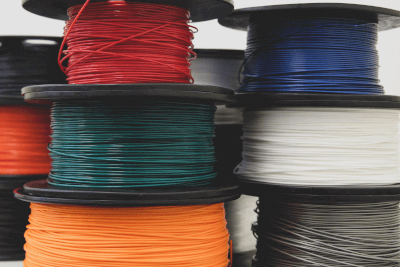What Is a Polylactic Acid Fiber?

Polylactic acid (PLA) fiber is a special type of fiber made from polylactic acid (PLA), which is a biodegradable plastic.
One of the key features of polylactic acid (PLA) fiber is its low CO2 emissions during combustion. While burning polyester (PET) produces approximately 2,300 kg of CO2 per ton, polylactic acid emits only about 1,800 kg.
Similar to its raw material, polylactic acid (PLA) fiber is biodegradable and can be decomposed by microorganisms under specific conditions. Compared to traditional fibers like polyester and polypropylene (PP), polylactic acid (PLA) fiber has a smaller environmental impact.
Uses of Polylactic Acid Fibers
Polylactic acid fibers degrade relatively slowly compared to other biodegradable plastics. They retain their shape in soil and water for about three years, making them suitable for agricultural and horticultural materials used over extended periods in natural environments.
Additionally, polylactic acid fibers possess luster, and antibacterial properties, and are fire-retardant, making them excellent for fabric production. They are commonly used in clothing items such as garments and body towels.
Furthermore, polylactic acid fibers find applications in various products including whiteboard cleaners and culture media for hydroponic cultivation.
Principle of Polylactic Acid Fibers
Polylactic acid fibers exhibit higher stability under normal conditions compared to other biodegradable plastics due to their unique degradation mechanism.
Unlike single-step degradation in other biodegradable plastics, the degradation of polylactic acid fiber occurs in two steps. The initial hydrolysis step reduces the average molecular weight of polylactic acid to about 10,000 to 20,000. Subsequently, microorganisms become active, leading to complete degradation.
Environmental stimuli such as high temperature, high humidity, and alkaline conditions trigger the first step of polylactic acid fiber degradation. Consequently, polylactic acid fibers exhibit high stability in soil and water, requiring specific stimuli to initiate decomposition.
However, in environments conducive to decomposition, such as compost, polylactic acid fibers can degrade rapidly (within 2 to 8 days). This balance of stability and decomposability makes them suitable for outdoor use followed by immediate disposal when no longer needed.
Types of Polylactic Acid Fibers
1. Staple Fiber
Poly(lactic acid) staple fiber consists of bundles of short fibers suitable for clothing applications due to their flexibility and texture. They are commonly used in lightweight garments, innerwear, T-shirts, and sportswear, offering comfort and breathability similar to natural fibers.
2. Fiber Film
Polylactic acid fiber film is a thin, transparent material often used in food packaging due to its excellent heat resistance. It helps preserve food freshness and quality while being environmentally friendly and biodegradable after disposal.
3. Non-Woven Fiber
Nonwoven polylactic acid fiber is a felt-like material used in nonwoven fabrics, filters, and medical applications. Its biodegradability and abrasion resistance make it ideal for waste disposal and medical applications such as surgical bandages and sterile packaging.
4. Compound Fiber
Compound polylactic acid fibers are blends of PLA with other materials to enhance specific properties. For example, blending PLA with polyester can improve fiber strength and durability, making them suitable for applications in the automotive industry and sporting goods.